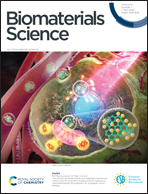Exosome-based delivery nanoplatforms: next-generation theranostic platforms for breast cancer
Abstract
Breast cancer is the most frequent type of malignancy, and the leading cause of cancer-related death in women across the globe. Exosomes are naturally derived 50–150 nm nanovesicles with a variety of bioactive molecules to regulate the complex intracellular pathways involved in all stages of breast cancer development. Exosomes are also considered as a potential new generation of natural nanocarriers due to their intriguing endogenous functionalities. Recently, the development of exosome-based delivery nanoplatforms that combine the inherent unique advantages of exosomes with advanced nanotechnology has emerged as a promising area. In the present review, we first declare the fundamental principles of the relationship between exosomes and breast cancer, ranging from the initiation and progression of breast cancer, to drug resistance. More efforts are made to present a comprehensive overview of the recent advances of exosome nanotechnology for breast cancer therapy, including natural exosomes from different cell types, engineered exosomes with cargo loading and membrane modification, and artificial bionic exosomes with more stable and scalable properties. Based on the recent advanced nanotechnologies, exosome-based delivery nanoplatforms have been considered as the next-generation theranostic platforms, which sheds the light on the achievement of the clinical translation of exosomes for breast cancer therapy.



 Please wait while we load your content...
Please wait while we load your content...